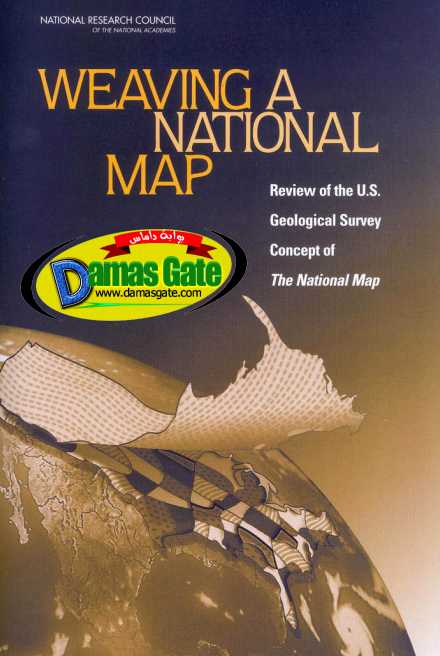Weaving a National Map

HISTORY
Since 1807 the United States has recognized a federal government responsibility to develop and disseminate maps and charts to “promote the safety and welfare of the people” (Thompson, 1988). This mission was significantly expanded in 1879, when Congressman Hewitt of New York in authoring legislation to create the United States Geological Survey (USGS) asked, “What is there in this richly endowed land of ours which may be dug, or gathered, or harvested, and made part of the wealth of America and of the world, and how and where does it lie?” Charged with this task, Clarence King as the first director of the USGS concluded that it mandated the mapping of the nation, a task increasingly formalized as a defining operation for the USGS. As the second director, John Wesley Powell, acting on advice from the National Academy of Sciences (NAS, 1884), consolidated national mapping efforts and started work on a 20year
mapping program as a “sound framework for scientific study and
national resource development.” This initially consisted of maps at 1:250,000
and 1:125,000 scale, but by 1894 two-thirds of the nation was covered at the more detailed
scale of 1:62,500. During the twentieth century the mapping evolved into a National
Mapping program, today the responsibility of USGS's Geography Discipline (see Box 1.1).
During the 1950s a standard mapping scale of 1:24,000 was adopted for the contiguous states and Hawaii, and the national mapping effort started
INTRODUCTION
minority of the needs of map users, and maps have evolved into digital spatial data, computer representations of the nation’s features and of the paper maps that first captured them. The digital transformation has taken the mapping world by storm. The USGS began a digital conversion effort in the 1970s, and digital mapping of America is taking place at the local level as literally thousands of separate private, nonprofit, academic, tribal, state, and local organizations build and now maintain their own detailed maps and databases to suit their own needs, often independent of federal mapping efforts.
Recognizing this transition, the USGS envisions its role as the national spatial data coordinator, rather than as the central map creator for the next level of the mapping of the nation (USGS, 2001). Key to this role will be the USGS’s proposed leadership in spatial data standards development (USGS, 2001).3
The broader aim is to build out the National Spatial Data Infrastructure (NSDI) (see Box 1.2) that links spatial data holdings across the nation. In the committee’s view this infrastructure will approach completion once it contains high-quality, integrated, nationally consistent data linked to other larger-scale spatial datasets, such as those being generated by communities around the country. Hundreds of millions of dollars worth of data and technology reside with local, state, and tribal entities, and thousands of datacollection
projects are planned. What is needed is the collaborative architecture
and incentives to maximize the benefit to all participants.
Download
*

HISTORY
Since 1807 the United States has recognized a federal government responsibility to develop and disseminate maps and charts to “promote the safety and welfare of the people” (Thompson, 1988). This mission was significantly expanded in 1879, when Congressman Hewitt of New York in authoring legislation to create the United States Geological Survey (USGS) asked, “What is there in this richly endowed land of ours which may be dug, or gathered, or harvested, and made part of the wealth of America and of the world, and how and where does it lie?” Charged with this task, Clarence King as the first director of the USGS concluded that it mandated the mapping of the nation, a task increasingly formalized as a defining operation for the USGS. As the second director, John Wesley Powell, acting on advice from the National Academy of Sciences (NAS, 1884), consolidated national mapping efforts and started work on a 20year
mapping program as a “sound framework for scientific study and
national resource development.” This initially consisted of maps at 1:250,000
and 1:125,000 scale, but by 1894 two-thirds of the nation was covered at the more detailed
scale of 1:62,500. During the twentieth century the mapping evolved into a National
Mapping program, today the responsibility of USGS's Geography Discipline (see Box 1.1).
During the 1950s a standard mapping scale of 1:24,000 was adopted for the contiguous states and Hawaii, and the national mapping effort started
INTRODUCTION
minority of the needs of map users, and maps have evolved into digital spatial data, computer representations of the nation’s features and of the paper maps that first captured them. The digital transformation has taken the mapping world by storm. The USGS began a digital conversion effort in the 1970s, and digital mapping of America is taking place at the local level as literally thousands of separate private, nonprofit, academic, tribal, state, and local organizations build and now maintain their own detailed maps and databases to suit their own needs, often independent of federal mapping efforts.
Recognizing this transition, the USGS envisions its role as the national spatial data coordinator, rather than as the central map creator for the next level of the mapping of the nation (USGS, 2001). Key to this role will be the USGS’s proposed leadership in spatial data standards development (USGS, 2001).3
The broader aim is to build out the National Spatial Data Infrastructure (NSDI) (see Box 1.2) that links spatial data holdings across the nation. In the committee’s view this infrastructure will approach completion once it contains high-quality, integrated, nationally consistent data linked to other larger-scale spatial datasets, such as those being generated by communities around the country. Hundreds of millions of dollars worth of data and technology reside with local, state, and tribal entities, and thousands of datacollection
projects are planned. What is needed is the collaborative architecture
and incentives to maximize the benefit to all participants.
Download
*